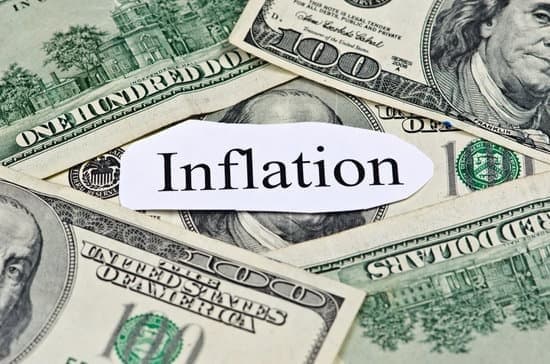Forbes reported in December that U.S. economic officials were finally admitting that inflation was not ‘transitory’ and since then things have only gotten worse with inflation hitting 8.5 percent in March 2022, the highest year-over-year level since December 1981.
“We tend to use [transitory] to mean that it won’t leave a permanent mark in the form of higher inflation,” Fed Chairman Jerome Powell said during a congressional hearing in December. “I think it’s probably a good time to retire that word and try to explain more clearly what we mean.”
Treasury Secretary Janet Yellen echoed Powell’s sentiments in an interview with Reuters: “I am ready to retire the word transitory. I can agree that that hasn’t been an apt description of what we are dealing with.”
What is Transitory Inflation?
Defining transitory inflation can be in the eye of the beholder because not everyone has the same meaning in mind for the word “transitory.”
“One problem is that we’re not all on the same page about what “transitory” means. Merriam-Webster defines it as “of brief duration.” Oxford Languages calls it “not permanent.” There’s quite a gap between those two definitions!” wrote Bloomberg Opinion editor Mark Gongloff, about a month before U.S. officials admitted that the current inflation trend was not transitory.
The American Institute for Economic Research (AIER) Director of AIER’s Sound Money Project and associate professor of economics at Florida Atlantic University, William J. Luther, agreed with Gongloff.
“The disagreement today is whether this inflation is permanent or transitory. However, there is some confusion over what the term “transitory” actually means in this context,” Luther wrote in October 2021.
Luther identifies two economic uses of the term transitory to describe inflation:
- In the first sense, inflation is described as transitory if the rate does not remain high permanently
- In the second sense, inflation is described as transitory only if the temporarily high inflation is followed by temporarily low inflation, which restores the old price level trajectory
High Inflation Follows Stable Pre-Pandemic Period
Making the current high inflation even more shocking for most consumers is that it follows a pre-pandemic period where inflation simply hovered around 2 percent annually and was an afterthought for everyone but economists.
When the U.S. inflation rate, spurred on by the economy roaring back to life after the first year of COVID-19, peaked above 4 percent in April 2021, it was the first time in more than a decade that level had been breached (not since September 2008 when it was 4.9 percent).
Inflation had not punched above 6 percent in almost 40 years since July 1982, but it hit 6.2 percent in October and has kept rising each month. In fact, inflation has risen for 7 consecutive months now, starting at 5.3 percent in August of 2021:
- September 2021: 5.4 percent
- October 2021: 6.2 percent
- November 2021: 6.8 percent
- December 2021: 7.0 percent
- January 2022: 7.5 percent
- February 2022: 7.9 percent
- March 2022: 8.5 percent
Where Consumers (and Businesses) Notice Inflation Most: At the Pump
Perhaps consumers, and businesses, notice inflation the most when they hit the pump where the per gallon price of gasoline hit a record high in March at $4.43.
The Associated Press reported that “average U.S. price of regular-grade gasoline shot up a whopping 79 cents over the past two weeks to a record-setting $4.43 per gallon (3.8 liters) as Russia’s invasion of Ukraine is contributing to already-high prices at the pump.”
That $4.43 price shattered the previous high mark of $4.11, set in July 2008. Overall, prices at the pump have climbed $1.54 higher than a year earlier.
Prior to the pandemic, Americans had not paid an average of over $3 per gallon for gas since November 2014 and when the pandemic first started the price at the pump sank to $1.77 in April 2020.
Consumers Look to Cut Spending to Fight Inflation
Now that inflation is not transitory but here for the longer haul, consumers are looking for ways to save money to fight the rising prices.
“If price pressure continues, more than 50 percent of adults say they’ll cut back spending on dining out and will consider reducing that further,” according to the CNBC + Acorns Invest in You survey, conducted by Momentive.
The survey found that Americans will consider doing the following if higher prices persist (along with the number that have already started doing it in the last six months):
- Cut back on dining out: 52 percent (53 percent have done it)
- Cut back on driving: 42 percent (39 percent)
- Cancel a trip or vacation: 40 percent (29 percent)
- Cancel a monthly subscription: 36 percent (35 percent)
- Switch to a generic product: 32 percent (32 percent)
- Delay buying a car: 26 percent (22 percent)
- Delay buying a home: 20 percent (15 percent)
- Borrow money or take on credit card debt to cover expenses: 16 percent (20 percent)
- Skip paying their bills: 12 percent (13 percent)
“Americans are now spending more on essentials, making their budgets tighter without any change in habits. People are noticing these hikes and paying closer attention. Nearly half of all adults said they think about rising prices all the time, while 55 percent of those with annual household incomes of $50,000 or less are constantly checking costs,” the CNBC survey found.
This is something that business leaders, including small business owners, need to be mindful of and prepare for as much as possible.






